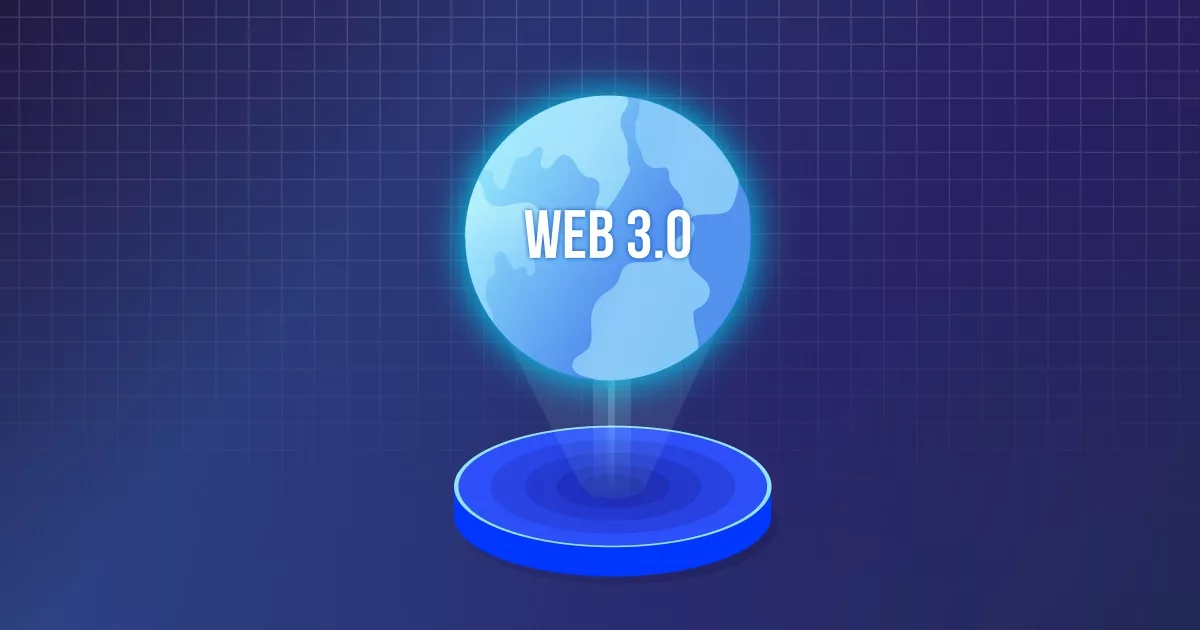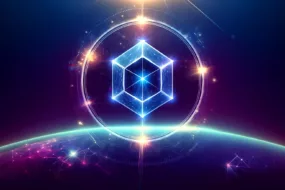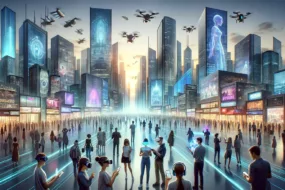
The way we use technology is constantly evolving. We’ve progressed from the early days of the internet, Web 1.0, to the existing phase, Web 2.0. In Web 1.0, only those with the right connections could access information. In Web 2.0, the internet became a powerful tool for collaboration and communication. Now, we are entering the era of Web 3.0, where technology is becoming more innovative and more powerful than ever before.
This article will explore the top 10 Web 3.0 technologies shaping the internet’s future and our lives. These technologies, from Artificial Intelligence (AI) to blockchain, pave the way for a new digital era.
So, let’s dive in and see what the future holds!
Web 3.0: The Future of the Internet
With each new wave of innovation comes new opportunities for businesses and individuals.
Web 3.0 is the next wave of innovation. But how?
Before directly diving into Web 3.0, let us understand the differences between all forms of the web at a higher level.
- Web 1.0: Read-only
- Web 2.0: Read and Write (on centralized platforms)
- Web 3.0: Read, Write, and Own
Web 1.0 is a thing of the past. Web 2.0 is the internet as we know it today. Third-party platforms own and use our data to generate revenues. Web 3.0 is the internet where we are heading.
The vision of web 3.0 is to create a more open, transparent, and decentralized internet controlled by its users rather than big companies.
The crucial features of Web3 include,
1. Decentralization
Data is distributed across multiple nodes, making it more secure and less vulnerable to hacking.
2. Ownership
Our identity can move fluidly between platforms without allowing the service provider to capture and monetize our data.
3. Interoperability
We can combine Web 3.0 applications in numerous ways to create new use cases.
4. Privacy
Encryption and security measures protect personal data and prevent access by 3rd parties without user consent.
5. Trust
Blockchain provides a transparent and tamper-proof record of transactions, eliminating the need for intermediaries and building user trust.
6. Lower Fee
Web 3.0 applications reduce transaction costs by eliminating intermediaries.
Top 10 Web 3.0 Technologies That Will Influence the Future
Web 3.0 is not one technology but an ecosystem of various cutting-edge systems operating together.
1. Decentralized web
The decentralized web concept involves creating a more open and distributed internet infrastructure. It doesn’t rely on centralized servers controlled by a few large corporations. Instead, it uses peer-to-peer (P2P) networks and other protocols for greater privacy, security, and autonomy.
Users in a decentralized web have greater control over their data and digital identities. They can participate more directly in the management of online content.
The decentralized web can address many of the problems associated with the current internet. It includes censorship, data breaches, and monopolistic control over online services.
2. Blockchain
Blockchain is a digital ledger technology that enables secure and transparent transactions without intermediaries.
Each block in the blockchain contains a record of transactions and a unique code called a hash that identifies it. Once a block is added to the chain, it cannot be altered or deleted, which makes the system resistant to fraud.
Blockchains are typically used for cryptocurrencies such as Bitcoin (BTC). Still, they have many other potential applications, such as digital identity verification and voting systems.
Blockchain technology is a crucial enabler of Web 3.0, providing a trustless mechanism for storing and verifying data. It enables the creation of decentralized applications (dApps), smart contracts, and digital assets.
3. Cryptocurrency
Cryptocurrencies are a fundamental building block of web 3.0, providing the necessary financial infrastructure.
Cryptocurrency is a digital or virtual currency that uses cryptography to ensure the security of transactions. The most well-known crypto is Bitcoin, which was created in 2009. Since then, thousands of other cryptos have been made, including Ethereum, Ripple, Litecoin, and Bitcoin Cash.
One of the advantages of cryptocurrencies is that they are often faster and cheaper to transact with than traditional payment methods. They can also be used for anonymous transactions, appealing to some users.
They also allow the development of decentralized finance (DeFi) applications that can operate without intermediaries.
4. Smart contracts
Smart contracts are self-executing contracts that can be programmed to execute automatically when certain conditions are met.
They can automate many processes, from financial transactions to supply chain management.
Once a smart contract is deployed on a blockchain, it cannot be altered or deleted, ensuring its integrity. They are a crucial component of Web 3.0, as they enable the creation of dApps that can operate autonomously.
5. Decentralized finance
DeFi, or decentralized finance, is a term used to describe a new financial system built on blockchain technology.
Unlike traditional finance, which relies on centralized institutions like banks, DeFi is based on decentralized networks and smart contracts. DeFi platforms offer various financial services, including lending, borrowing, trading, and asset management.
DeFi applications will play a significant role in Web 3.0 by enabling the creation of new economic models that are more inclusive, transparent, and efficient.
6. Machine learning
Machine learning is a subset of Artificial Intelligence (AI). It uses algorithms and statistical models to learn from data and make predictions or decisions without needing explicit programming.
Machine learning has many applications, from image recognition and natural language processing to fraud detection and predictive maintenance.
7. Artificial intelligence
Artificial Intelligence (AI) is a broad field of computer science. It focuses on creating intelligent machines that can perform tasks that typically require human intelligence. It includes visual perception, speech recognition, decision-making, and natural language processing.
Several types of AI exist, including rule-based systems, machine learning, and deep learning.
- Rule-based systems use a set of predefined rules to make decisions.
- Machine learning algorithms learn from data to improve their performance.
- Deep learning uses neural networks to perform image and speech recognition tasks.
AI has many applications, from virtual assistants and chatbots to self-driving cars and medical diagnosis. They will enable the creation of intelligent agents and autonomous systems that can interact with users and other applications in a more human-like way.
AI-enabled Web 3.0 can act intelligently and improves the user’s web experience.
8. Augmented reality
Augmented reality (AR) is a technology that overlays digital information or objects in the real world.
AR can be experienced through various devices, including smartphones, tablets, and smart glasses. Though not fully immersive, AR enhances the user’s perception of reality using computer-generated graphics.
AR can be used in various applications, from gaming and entertainment to education and training. For example, AR can create interactive museum exhibits, enhance the shopping experience, and assist with complex medical procedures.
9. Virtual reality
Virtual reality (VR) is a technology that creates a simulated environment through computer-generated images, sounds, and sensations. Users can interact with this environment through specialized equipment, such as head-mounted displays, gloves, and motion controllers.
VR can provide an immersive, interactive experience that simulates real-world situations or creates new environments.
Like AR, VR also has many applications. For example, VR can create realistic simulations for military training, medical procedures, and architectural design. It can also provide an immersive experience for gamers, allowing them to feel as if they are inside the game world.
AR and VR will play a vital role in creating immersive environments for users while browsing the web.
10. Internet of things
The Internet of Things (IoT) is a network of physical devices, vehicles, buildings, and other objects. They are embedded with sensors, software, and connectivity, enabling them to collect and exchange data.
The Internet of Things (IoT) will be a crucial enabler of Web 3.0, creating a more connected and intelligent internet. Blockchain networks and IoT devices will enable data collection and data management in a secure and decentralized manner.
Conclusion
Web 3.0 technologies will drastically change how we interact with the digital world.
From the decentralized nature of blockchain to the increased insights provided by AI and machine learning, these technologies can enhance our digital experience.
They can also open up a world of possibilities for businesses and individuals, allowing them to create and access previously inaccessible breakthroughs.





